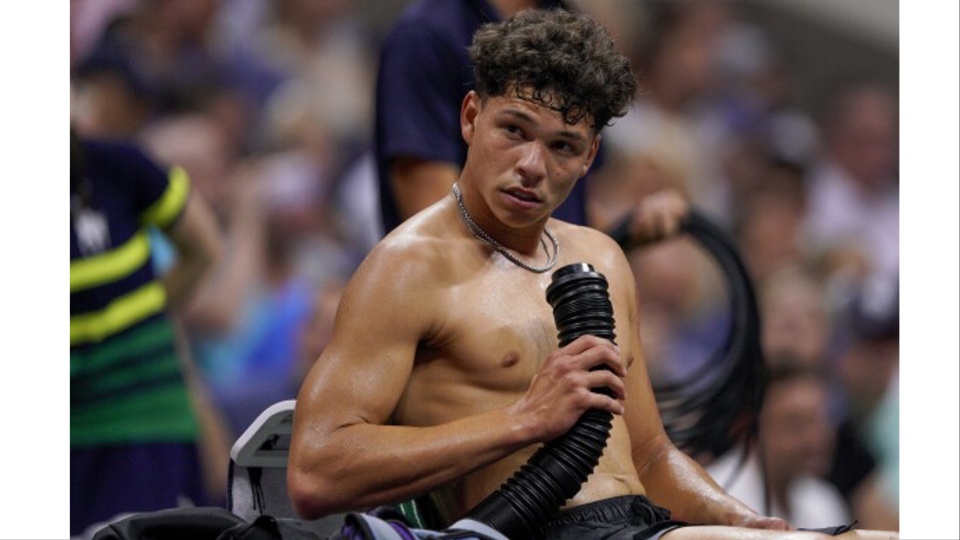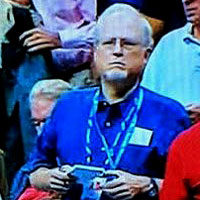
NEW YORK (AP)—Andy Murray prepared for the steamy conditions often found at the U.S. Open by simulating the “brutal heat and humidity” in New York this time of year with the help of, well, an actual steam room at his home.
The 36-year-old British tennis star set the humidity in there at 70% and spent hours riding a stationary bike nearby with the thermostat cranked up to 95 degrees Fahrenheit (35 Celsius), making the air feel as muggy as it does every summer around Flushing Meadows, where the year’s last Grand Slam tournament will conclude Sunday.
“Just to try and help with the heat adaptation,” explained Murray, who claimed the title in New York in 2012 but lost in mild conditions in the second round this time.
If the start of competition at the 2023 U.S. Open offered a bit of a reprieve for athletes, ball crews and spectators alike, thanks to highs mostly in the 70s F (20s C), that has decidedly changed. The temperature hit 90 F (32 C) on Sunday and again Tuesday, leaving players seeking relief from ice stuffed in plastic bags or cold air blown through tubes on the sideline.
Tournament officials altered the rules and partially shut the Arthur Ashe Stadium roof to offer extra shade. The high was expected to reach 95 F (35 C) on Wednesday.

That’s not a surprise: An Associated Press analysis shows the average high temperatures felt during the U.S. Open and the three other major tennis tournaments steadily have gotten higher and more dangerous in recent decades, reflecting the climate change that created record heat waves around the globe this summer. For athletes, it can keep them from playing their best and, worse, increases the likelihood of heat-related illness.
“It was super hot tonight. Really muggy. Super humid,” Frances Tiafoe said after losing to fellow American Ben Shelton in the quarterfinals Tuesday night, when the humidity climbed to 70%. “I was sweating a lot.”
The AP tracked the thermal comfort index, which measures air temperature in degrees while also taking into account humidity, radiation, wind, and other factors that affect how the body responds. It looked at each Grand Slam event dating to 1988, the first year all four had 128-player fields for women and men. Collectively, the maximum temperatures at those tournaments has risen by nearly 5 degrees F (nearly 3 C).
“People hear that and they don’t think it’s very much. It doesn’t necessarily register as alarming. Sometimes that 3- or 4-degree change can cause a doubling or even tripling of the number of hot days we experience,” said Daniel Bader, a climate scientist at Columbia University. “New York City’s temperatures have been rising, and that trend is projected to continue into the future.”
Other AP findings:
— From 1988 to 1992, daily highs in the thermal comfort index passed the threshold for strong heat stress, which is 90 F (32 C), on 7% of days with Grand Slam matches. From 2018 to 2022 that figure was 16%.

— The U.S. Open’s overall rise of nearly 3 F (1.5 C) since 1988 means it isn’t even the Grand Slam site where the heat is increasing most rapidly. That’s the Australian Open, where the average high temperatures jumped by more than 6 F (about 3.5 C).
Still, the U.S. Open often was the hottest of the four majors in any given year. Players can tell.
“I remember the year I won, the last four days it was super hot and super humid,” said 2016 U.S. Open champion Stan Wawrinka of Switzerland. “It’s one of the toughest tournaments, fitness-wise. … Your body really loses a lot of energy.”
The U.S. Open’s spot late in the tennis season creates an accumulation of wear-and-tear and general fatigue, but the sweltering conditions at Flushing Meadows likely deserve some blame for a high number of in-match retirements there.
Since 1988, there have been 17 occasions in which at least 10 players at one Slam stopped during matches, more than half of them at the U.S. Open. The three highest totals came in New York: 16 in 2015, 15 in 2011, and 14 in 2018, when a half-dozen men stopped on Day 2 because of heat issues.
“We’re seeing a lot more heat-related illnesses across all sports,” said Elan Goldwaser, a sports medicine physician at Columbia University Medical Center who works with athletes on the U.S. ski team and at Fordham University.
The blue hard courts at the U.S. Open absorb heat more than the grass at Wimbledon or the clay at the French Open, making it feel as much as 15 degrees F (about 8 C) hotter than the air temperature, according to the U.S. Tennis Association. Athletes “are essentially playing on a hot plate,” Goldwaser said.
“Their ability to hit the ball as hard starts to go down. Their reaction time starts to go down,” said Jon Femling, the clinical vice chair of emergency medicine at the University of New Mexico. “Getting heated up, your body’s first response is to try and cool down, and the way it does that is by pumping blood to all of your skin…. Your heart just has to immediately start working harder.”
The fans in the stands need to be careful, too, especially if alcohol is involved. On one cooler-than-usual yet sunny day during qualifying rounds ahead of the Aug. 28 to Sept. 10 main draw in New York, spectators grabbed free sunscreen samples and cooled off near misting fans.
“I have empathy, sympathy…for tennis players,” said Ola Yinka, a 45-year-old filmmaker from Chicago. “I used to play tennis as a kid, so I remember I would have fun with my dad. But at the same time, after like 10 minutes, I was like, ‘I don’t even want to play.’”
U.S. Open players get 75 seconds to rest between games and two minutes between sets. That’s time enough to hydrate or try to cool off with an ice-filled towel. But it’s not enough time to lower the body’s core temperature.

So, physiotherapists watch for dizziness, cramping, and other signs of heat illness.
“We might suggest that they’re not safe to play,” said Reshma Rathod, a WTA physiotherapist. “They may not want to stop.”
U.S. Open tournament referee Jake Garner said chair umpires serve as “the first line of defense” if someone is in real danger, but “in general, we leave (it up to) the players.”
While some athletes, like Murray, find unusual ways to train, others figure the acclimatization that comes from dealing with heat and humidity at tournament after tournament, week after week, year after year, or from living in places like Florida—a favorite base for many—will help.
“For a recreational player who may be watching on TV, to think about playing a tennis match when it’s 92 degrees out and 95% humidity—they might think that’s just unfathomable,” said Todd Ellenbecker, the ATP vice president for medical services. “But our players…play in that kind of heat throughout the entire year.”
We hope you appreciated this article. At People’s World, we believe news and information should be free and accessible to all, but we need your help. Our journalism is free of corporate influence and paywalls because we are totally reader-supported. Only you, our readers and supporters, make this possible. If you enjoy reading People’s World and the stories we bring you, please support our work by donating or becoming a monthly sustainer today. Thank you!














Comments